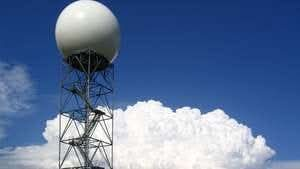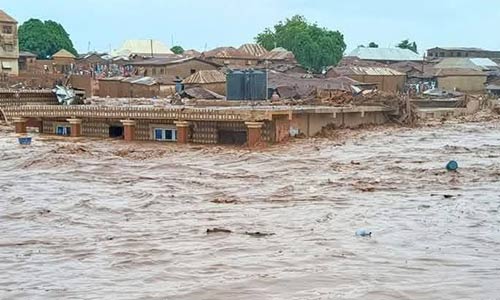WEATHER FORECASTING: A Brief History and Importance

Did you know that the six main components of temperature, atmospheric pressure, wind, humidity, precipitation, and cloudiness, together describe the weather at any given time and that with the knowledge of atmospheric processes, they help meteorologists forecast what the weather will be in the near future?
One of the first things you probably do every morning is look out the window to see what the weather is like. Looking outside and listening to the day’s forecast helps you decide what clothes you will wear and maybe even what you will do throughout the day... The weather affects us in many ways. Day-to-day changes in weather can influence how we feel and the way we look at the world. Severe weather, such as tornadoes, hurricanes, and blizzards, can disrupt many people’s lives because of the destruction they cause.
The term “weather” refers to the temporary conditions of the atmosphere, the layer of air that surrounds the Earth. We usually think of weather in terms of the state of the atmosphere in our own part of the world. But weather works like dropping a pebble in water—the ripples eventually affect water far away from where the pebble was dropped. The same happens with weather around the globe. Weather in your region will eventually affect the weather hundreds or thousands of kilometers away. For example, a snowstorm around Winnipeg, Manitoba, Canada, might eventually reach Chicago, Illinois, as it moves southeast through the United States.
Weather doesn’t just stay in one place. It moves, and changes from hour to hour or day to day. Over many years, certain conditions become familiar weather in an area. The average weather in a specific region, as well as its variations and extremes over many years, is called climate... which changes, just like weather. However, climate change can take hundreds or even thousands of years. Today, the Sahara Desert in northern Africa is the largest desert in the world. However, several thousand years ago, the climate in the Sahara was quite different. This “Green Sahara” experienced frequent rainy weather.
Meteorology is the science of forecasting weather. Weather forecasting has been important to civilizations for thousands of years. Agriculture relies on accurate weather forecasting: when to plant, when to irrigate, when to harvest. Ancient cultures—from the Aztecs of Mesoamerica to the Egyptians in Africa and Indians in Asia—became expert astronomers and predictors of seasonal weather patterns.
In all of these cultures, weather forecasting became associated with religion and spirituality. Weather such as rain, drought, wind, and cloudiness were associated with a deity, or god. These deities were worshipped in order to ensure good weather. Rain gods and goddesses were particularly important, because rain influenced agriculture and construction projects. Tlaloc (Aztec), Set (Egyptian), and Indra (India), as well as Thor (Norse), Zeus (Greek), and Shango (Yoruba), are only some gods associated with rain, thunder, and lightning.
Developments in the 17th and 18th centuries made weather forecasting more accurate. The 17th century saw the invention of the thermometer, which measures temperature, and the barometer, which measures air pressure. In the 18th century, Sir Isaac Newton was able to explain the complex physics of gravity, motion, and thermodynamics. These principles guided the science of meteorology into the modern age. Scientists were able to predict the impact of high-pressure systems and low-pressure systems, as well as such weather events as storm surges, floods, and tornadoes.
Since the late 1930s, one of the main tools for observing general conditions of the atmosphere has been the radiosonde balloon, which sends information needed for forecasting back to Earth. Twice each day, radiosondes are released into the atmosphere from about a thousand locations around the world. The U.S. National Weather Service sends up radiosondes from more than 90 weather stations across the country.
A weather station is simply a facility with tools and technology used to forecast the weather. Different types of thermometers, barometers, and anemometers, which measure wind speed, are found at weather stations. Weather stations may also have computer equipment that allows meteorologists to create detailed maps of weather patterns, and technology that allows them to launch weather balloons.
Many weather stations are part of networks. These networks allow meteorologists from different regions and countries to share information on weather patterns and predictions. In the United States, the Citizen Weather Observer Program depends on amateur meteorologists with homemade weather stations and internet connections to provide forecasts across the United States.
The Aircraft Meteorological Data Relay (AMDAR) also assists in gathering weather data directly from the atmosphere. AMDAR uses commercial aircraft to transmit information about the atmosphere as the planes fly through it. Weather balloons and AMDAR instruments gather information about temperature, pressure, humidity, and wind from very high levels in the atmosphere. Meteorologists input the data to computers and use it to map atmospheric winds and jet streams. They often combine this with data about temperature, humidity, and wind recorded at ground level. These complex weather maps using geographic information system (GIS) technology can calculate how weather systems are moving and predict how they might change.
This type of forecasting is called synoptic forecasting. Synoptic forecasting is getting a general idea of the weather over a large area. It relies on the fact that in certain atmospheric conditions, particular weather conditions are usually produced. For example, meteorologists know that a low-pressure system over the U.S. state of Arizona in winter will bring warm, moist air from the Gulf of Mexico toward Colorado. The high-pressure weather system of the Rocky Mountains drains the water vapor out of the air, resulting in rain. Meteorologists know that heavy snow may result when that warm air mass heads toward Colorado. Businesses, such as ski resorts, rely on such information. Transportation networks also rely on synoptic forecasting.
If meteorologists knew more about how the atmosphere functions, they would be able to make more accurate forecasts from day to day or even from week to week. Making such forecasts, however, would require knowing the temperature, atmospheric pressure, wind speed and direction, humidity, precipitation, and cloudiness at every point on the Earth.
It is impossible for meteorologists to know all this, but they do have some tools that help them accurately forecast weather for a day or two in advance. But because the atmosphere is constantly changing, detailed forecasts for more than a week or two will never be possible. Weather is just too unpredictable.
Sources: National Geographic | Brittanica
#penglobalhistory #weather



